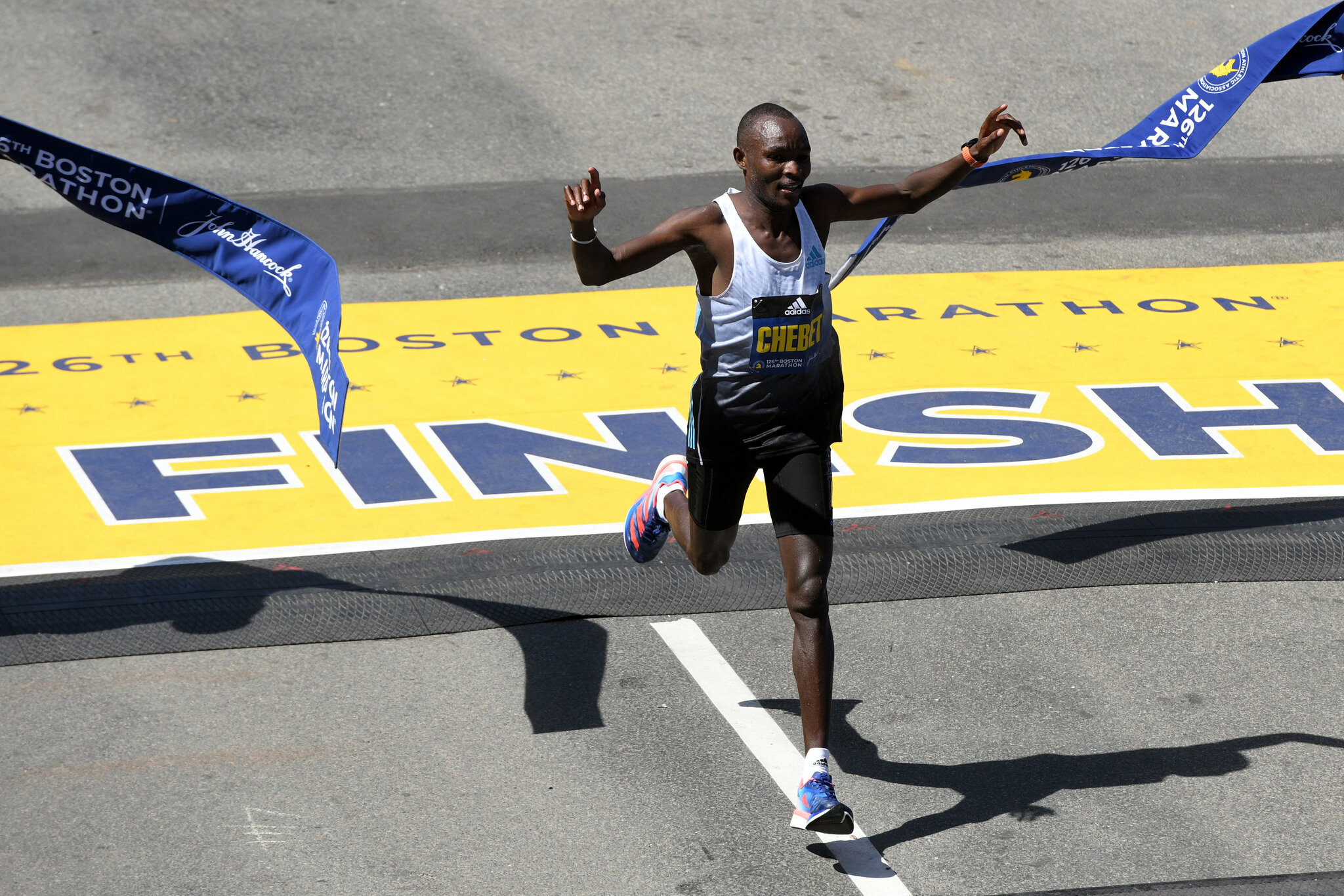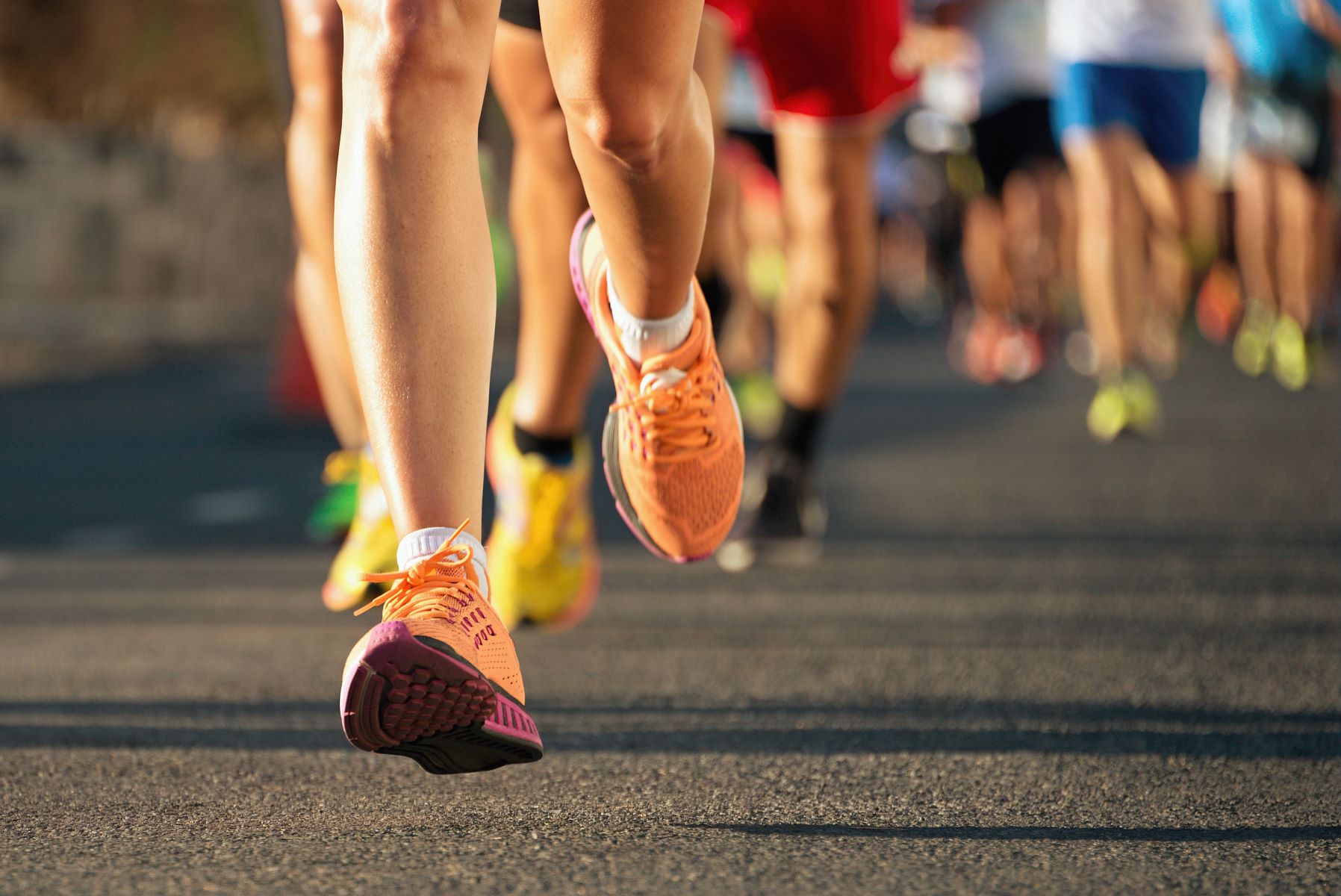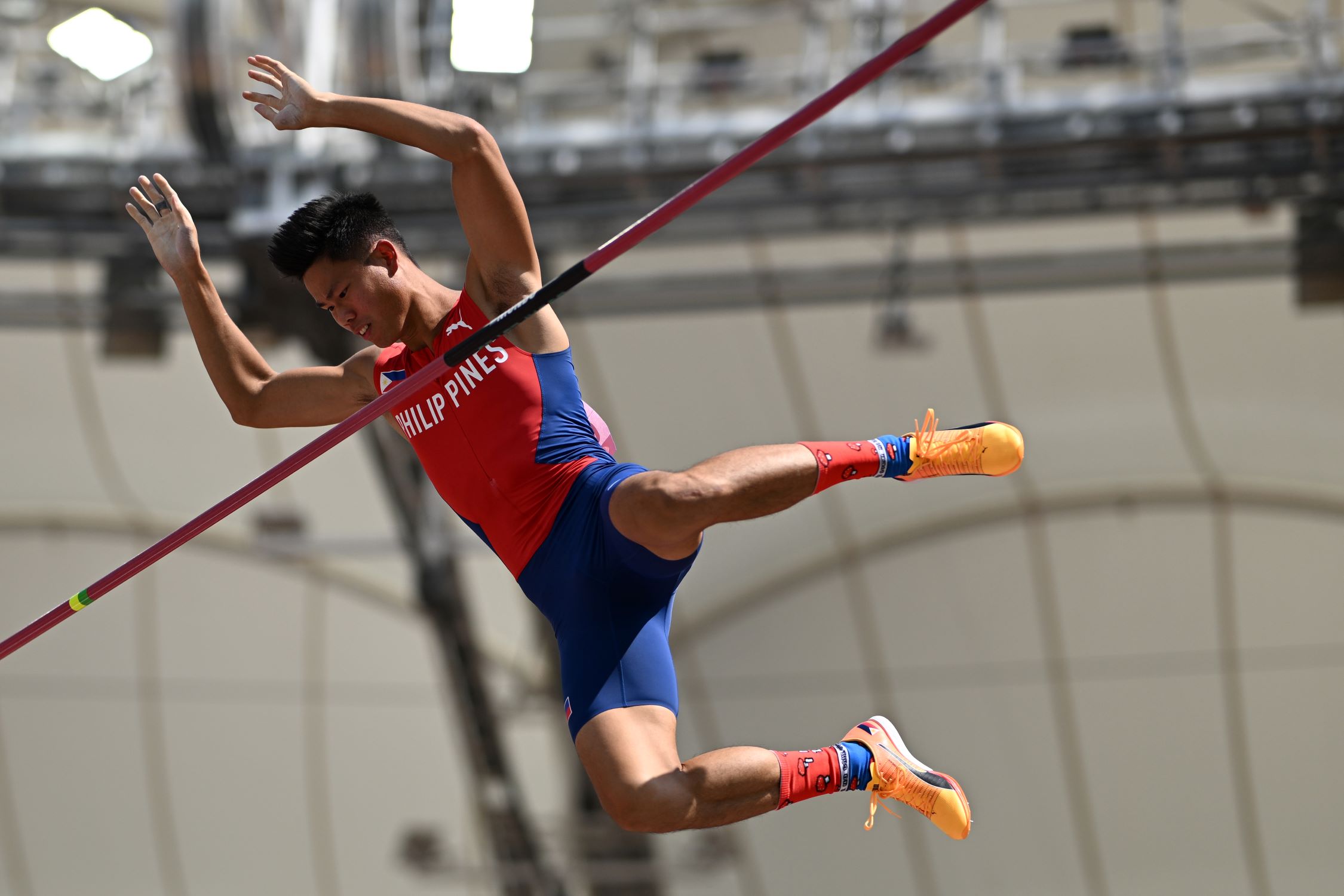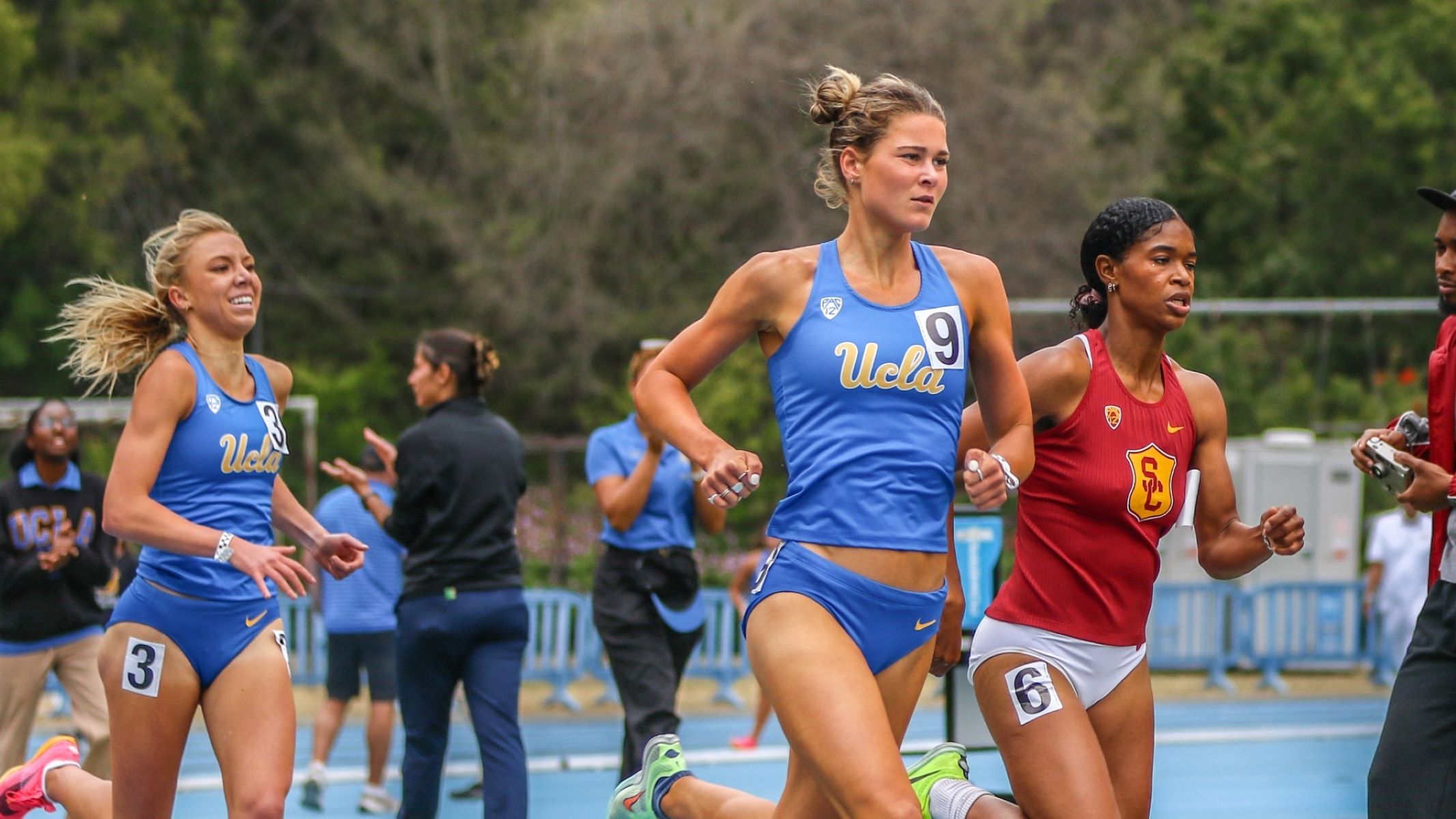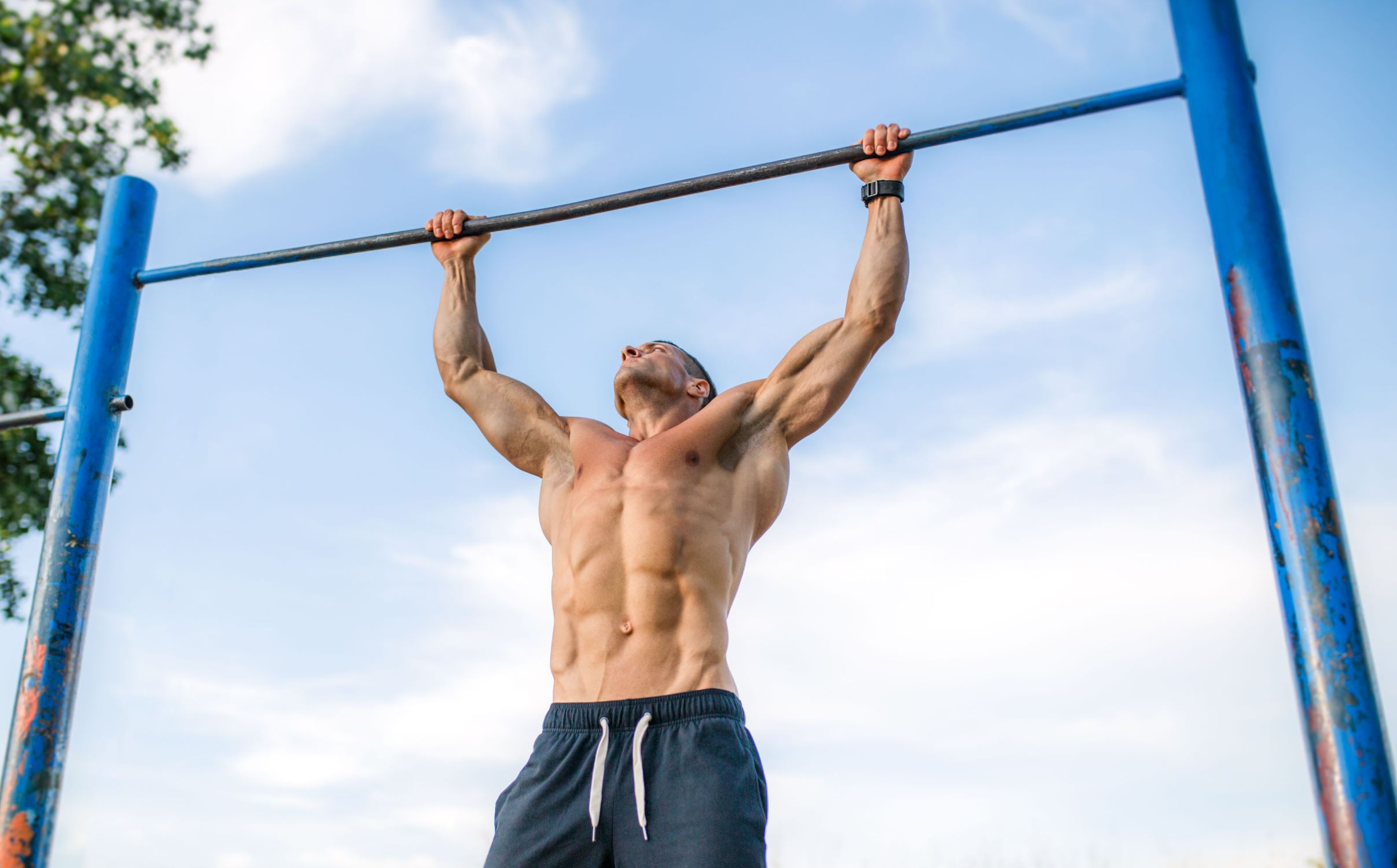

Featured
How Did Spartans Workout
Modified: January 2, 2024
Discover the intense workout routine of the ancient Spartans in this featured article. Learn how they trained to become the ultimate warriors.
Introduction
The Spartans were renowned for their incredible physical strength, endurance, and combat skills. The ancient Greek city-state of Sparta had a unique approach to physical training, which played a crucial role in their military success. While other societies focused on theoretical education and intellectual pursuits, the Spartans recognized the importance of physical fitness in shaping strong and resilient warriors.
In the Spartan society, physical training was not just a recreational activity or a means of staying fit; it was a way of life. From an early age, Spartan children were exposed to rigorous physical exercises and harsh training methods to prepare them for a lifetime of military service. The importance of physical fitness was so ingrained in Spartan culture that it permeated every aspect of their society, from their education system to their religious rituals.
This article will delve into the historical context of Spartans’ physical training, explore the key components of their workout routines, and discuss the legacy of their training methods in modern fitness culture.
As we journey through the world of Spartan workouts, we will discover the training philosophy of the Spartans and the exercises they utilized for building strength, endurance, agility, and flexibility. We will also explore the role of diet and nutrition in supporting the physical demands of Spartan warriors.
By comparing Spartan training techniques to modern-day fitness programs, we can draw valuable insights from the ancient practices and gain a deeper appreciation for the holistic approach to physical fitness that the Spartans embodied.
So, let’s dive into the fascinating world of Spartan workouts and uncover the secrets of their legendary physical prowess.
Historical Context of Spartans’ Physical Training
The physical training of the Spartans was deeply rooted in the militaristic nature of their society. Sparta, located in the region of Laconia in ancient Greece, was a militaristic city-state known for its powerful army and disciplined warriors. The Spartan state emphasized the importance of physical strength, endurance, and combat skills to ensure their dominance on the battlefield.
The rigorous physical training of the Spartans began at a young age. Boys were taken from their families at the age of seven and placed into military barracks called “agoge.” Here, they underwent an intense training regimen designed to mold them into formidable soldiers. This rigorous training continued throughout their lives, even as they transitioned into the adult warrior class known as “Homoioi.”
Physical training in Sparta focused primarily on preparing warriors for the harsh conditions of battle. It emphasized discipline, teamwork, and mental fortitude alongside physical fitness. The Spartans believed that a strong body and an indomitable spirit were essential for success on the battlefield.
Training sessions consisted of various physical exercises and military drills. Wrestling, boxing, and pankration (a mixture of boxing and wrestling) were popular combat sports among the Spartans. These activities served not only as a means of honing their combat skills but also as a platform for fostering camaraderie and competition among soldiers.
The Spartans also placed great emphasis on endurance training. Long-distance running and marching were key elements of their workouts. These activities helped the soldiers develop stamina and resilience, allowing them to endure long marches and engage in prolonged combat without fatigue.
Shield drills, spear throwing, and weapon training were integral components of Spartan physical training. These exercises were aimed at refining their battle techniques and increasing their proficiency with weapons, ensuring they were well-prepared for the challenges of warfare.
While physical training played a central role in Spartan society, it was not limited to men. Spartan women also underwent physical education to develop strength and fitness. This emphasis on physical prowess extended to every member of the society, reinforcing the idea that physical fitness was essential for every Spartan, regardless of their gender.
The unique training methods and fierce dedication to physical fitness practiced by the Spartans set them apart from other ancient societies. Their commitment to physical training gave them a significant advantage on the battlefield, as their soldiers were well-prepared both physically and mentally for the rigors of war.
Now that we understand the historical context of Spartan physical training, let us explore the philosophy behind their workouts and the specific components that made up their training regimens.
Importance of Physical Fitness in Spartan Society
In Spartan society, physical fitness was not just a desirable quality; it was a fundamental aspect of their culture. The Spartans believed that a strong and fit body was necessary for individuals to fulfill their duty as warriors and contribute to the well-being of the state.
Physical fitness was valued not only for its practical benefits in warfare but also for its role in cultivating discipline, self-control, and mental fortitude. The Spartans viewed physical training as a means of developing strong character traits such as courage, resilience, and perseverance.
In the eyes of the Spartans, physical fitness was a means to achieve spiritual and mental growth. The intense physical training regimens served as a pathway to self-improvement and personal development. By pushing their physical limits, the Spartans believed they were forging a stronger mind and character.
Furthermore, physical fitness played a crucial role in establishing social hierarchies within Spartan society. The level of physical fitness achieved by an individual was seen as a reflection of their commitment to Spartan ideals and their worthiness as a citizen of Sparta. It was also a factor in determining an individual’s eligibility for certain privileges and responsibilities within the community.
The emphasis on physical fitness in Spartan society extended beyond the battlefield. It permeated all aspects of life, including education, cultural activities, and religious rituals. Physical education was an integral part of the Spartan education system, with an equal emphasis on physical and intellectual development.
The Spartans believed that a well-rounded individual possessed both physical and intellectual prowess. They recognized that physical fitness could enhance cognitive abilities, discipline, and focus, leading to a more effective and capable soldier. This holistic approach to education set the Spartans apart from other ancient societies, where physical training often took a backseat to intellectual pursuits.
Physical fitness was also celebrated in Spartans’ cultural activities and religious festivals. Sporting competitions, such as the ancient Olympic Games, were highly regarded, and Spartans frequently participated to showcase their physical prowess. These events provided an opportunity for Spartans to demonstrate their athletic abilities and gain recognition for their physical achievements.
The Spartan ideal of physical fitness influenced not only the warriors but also the entire society, as individuals aspired to embody the strength and endurance displayed by their military elite. This collective focus on physical fitness fostered a strong sense of unity and camaraderie among the Spartans, reinforcing their identity as a formidable military force.
Understanding the importance of physical fitness in Spartan society is key to comprehending the motivation behind their intense training methods. In the next section, we will delve into the training philosophy of the Spartans and explore the key components of their workout routines.
Training Philosophy of the Spartans
The training philosophy of the Spartans was rooted in their belief that physical fitness was an integral part of the development of a well-rounded individual and a successful warrior. They understood that physical strength and endurance were essential for survival on the battlefield, but their training went beyond mere physical preparation.
The Spartans believed in a holistic approach to training, which encompassed physical, mental, and moral aspects. They aimed to develop not only powerful bodies but also disciplined minds and unwavering character. Their training regimen was designed to instill qualities such as discipline, self-control, and loyalty in their warriors.
One fundamental aspect of the Spartan training philosophy was the emphasis on teamwork and camaraderie. The Spartans recognized that a strong and cohesive unit was more effective than individual prowess alone, so their training methods focused on fostering a sense of unity among the warriors. Team exercises and group training activities were employed to develop trust, cooperation, and a shared sense of purpose.
Mental resilience was another important element of Spartan training. The soldiers were subjected to intense mental and physical challenges to cultivate a strong mindset. They were taught to embrace discomfort, endure hardship, and overcome obstacles with unwavering determination. This mental toughness enabled the Spartans to remain focused and composed in the heat of battle.
The Spartans also believed in the concept of eugenics, aiming to produce physically superior offspring. They carefully selected mates for their soldiers, favoring individuals who displayed exceptional physical attributes and mental strength. This selective breeding contributed to the perpetuation of the Spartan ideal of physical excellence from one generation to the next.
Discipline was at the core of Spartan training philosophy. The warriors were expected to adhere to a strict code of conduct and follow a rigorous daily routine. Disobedience and laziness were not tolerated, and stringent punishment was imposed on those who failed to meet the high standards set by their society.
Another defining characteristic of Spartan training was its focus on adaptability and versatility. They believed that warriors should be proficient in various forms of combat and physical activities. This versatility was achieved through a combination of diverse exercises, including wrestling, boxing, running, swimming, and gymnastics. By developing skills across various disciplines, Spartans were equipped to face any physical challenge that came their way.
The training philosophy of the Spartans embodied the idea that physical fitness, mental discipline, and moral character were interconnected and inseparable. The rigorous and multifaceted training methods employed by the Spartans ensured that their warriors were not only physically capable but also mentally and morally equipped to fulfill their duty as defenders of Sparta.
With an understanding of the training philosophy of the Spartans, we can now delve into the key components of their workout routines and the specific exercises they employed to develop strength, endurance, agility, and flexibility.
Key Components of Spartan Workouts
The workouts of the Spartans consisted of several key components that were essential for developing the physical strength, endurance, agility, and flexibility required of a formidable warrior. These components encompassed a wide range of exercises and training methods, each serving a specific purpose in shaping a well-rounded soldier.
Strength training was a fundamental component of Spartan workouts. The Spartans recognized the importance of building and maintaining strong muscles to withstand the physical demands of combat. To achieve this, they incorporated various exercises such as bodyweight movements, weightlifting, and calisthenics into their training routines. These exercises targeted major muscle groups and promoted overall strength development.
Endurance training was also a vital aspect of Spartan workouts. Whether it was enduring long marches or engaging in prolonged battles, Spartans needed exceptional stamina to outlast their opponents. To build endurance, they engaged in activities such as long-distance running, marching with heavy gear, and high-intensity interval training. These exercises not only improved cardiovascular fitness but also developed mental resilience in the face of physical fatigue.
Agility and quickness were crucial for maneuvering on the battlefield, and the Spartans focused on training these qualities. They incorporated exercises that emphasized speed, agility, and explosive power, such as sprints, agility ladder drills, and plyometrics. Developing these attributes allowed Spartans to swiftly change directions, evade attacks, and execute lightning-fast strikes.
Flexibility played a significant role in Spartan workouts. The ability to move freely and maintain a wide range of motion was essential for effective combat techniques and injury prevention. To enhance flexibility, Spartans incorporated stretching exercises, yoga-like movements, and dynamic stretching routines into their training. These exercises helped to improve joint mobility, muscular elasticity, and overall flexibility.
Mental training was an integral part of Spartan workouts. The ability to stay focused, make split-second decisions, and remain calm under pressure was paramount on the battlefield. Spartans engaged in mental exercises such as visualization, concentration drills, and strategic simulations to sharpen their mental acuity and enhance their combat effectiveness.
Group training and teamwork were emphasized in Spartan workouts. The Spartans understood that coordination and communication among warriors were essential for success in battle. They performed exercises that required collaboration, such as team drills, mock battles, and military formations. These activities not only fostered a sense of unity but also honed the ability to operate efficiently as a cohesive unit.
Varied and challenging workouts were a hallmark of Spartan training. The workouts were designed to continually push the soldiers beyond their limits, ensuring constant physical and mental adaptation. The intensity and duration of the workouts progressively increased as individuals advanced through the ranks, constantly pushing them to improve and excel.
With the key components of Spartan workouts outlined, it is clear that the training methods employed by the Spartans were comprehensive, targeting different aspects of physical fitness as well as mental and moral development. These specialized exercises and training techniques were instrumental in shaping the superior physical capabilities and warrior ethos for which the Spartans are renowned.
Now, let’s explore specific exercises that were incorporated into Spartan training to build strength, endurance, agility, and flexibility.
Exercises for Strength and Endurance
The Spartans recognized that building both strength and endurance was crucial for their warriors to meet the physical demands of battle. To achieve this, they incorporated various exercises into their training routines that targeted both aspects of physical fitness.
One of the primary exercises for building strength in Spartan training was weightlifting. Spartans performed exercises such as deadlifts, squats, and overhead presses using heavy weights. These compound movements engaged multiple muscle groups simultaneously, promoting overall strength development. The use of weights allowed Spartans to progressively increase the resistance, challenging their muscles and stimulating growth.
In addition to weightlifting, bodyweight exercises were a key component of Spartan training for strength. Exercises such as push-ups, pull-ups, and dips were regularly performed to build upper body strength. These bodyweight movements required the soldiers to lift their own bodyweight, developing strong arms, shoulders, chest, and back muscles. They also provided a functional strength that could be applied to various combat scenarios.
For lower body strength, the Spartans engaged in exercises such as squats, lunges, and jumps. These exercises targeted the legs, including the quadriceps, glutes, and hamstrings, which played a significant role in executing powerful movements on the battlefield. By incorporating lower body exercises, Spartans developed a solid foundation of leg strength that allowed them to sprint, jump, and perform agile maneuvers.
To build endurance, the Spartans emphasized activities that challenged cardiovascular fitness and mental fortitude. Long-distance running was a prevalent exercise for developing endurance. Spartans would often run for extended distances, building up their cardiovascular capacity and improving their ability to sustain physical effort over prolonged periods.
Marching with heavy gear was another endurance-building exercise. The soldiers were required to carry heavy shields, spears, and armor as they marched long distances. This exercise not only tested their endurance but also built mental resilience, as they had to endure the discomfort and fatigue while maintaining focus and discipline.
The Spartans also used interval training to enhance endurance. High-intensity interval training (HIIT) involved alternating between periods of intense effort and active recovery. This approach pushed their cardiovascular system to its limits and improved their ability to recover quickly during intense battles.
In addition to the specific exercises for strength and endurance, the Spartans incorporated other training modalities to further enhance their physical capabilities. These included circuit training, which involved performing a series of exercises back-to-back with minimal rest, and calisthenics, which consisted of bodyweight exercises performed in rapid succession, targeting multiple muscles groups and increasing overall endurance.
By incorporating a combination of strength-building exercises, such as weightlifting and bodyweight movements, along with endurance-focused activities like running, marching, and interval training, the Spartans developed well-rounded physical abilities that enabled them to endure the rigors of battle and perform at their peak for sustained periods.
Next, we will explore the Spartan training methods for agility and flexibility and how they integrated these elements into their workouts.
Spartan Training Methods for Agility and Flexibility
The Spartans recognized the importance of agility and flexibility in combat situations, as they allowed warriors to move quickly and efficiently while executing various maneuvers. To develop these attributes, the Spartans incorporated specific training methods into their workout routines.
Agility training was a crucial component of Spartan workouts. They employed exercises that focused on speed, coordination, and quick reflexes. One common exercise was sprinting, which not only developed lower body strength but also enhanced agility, as it required rapid acceleration and deceleration. Spartans would perform sprints of varying distances to improve their explosive speed and agility on the battlefield.
Another agility-focused exercise was ladder drills. Spartans would set up an agility ladder on the ground and perform various footwork patterns, such as high knees, lateral movements, and quick steps. This drill improved foot speed, agility, and coordination, allowing warriors to swiftly change directions and evade opponents during combat.
To further enhance agility, the Spartans would engage in plyometric exercises. Plyometrics involved explosive movements, such as box jumps, depth jumps, and medicine ball throws, aimed at increasing power and quickness. These exercises trained the muscles to generate maximum force in minimal time, enabling Spartans to deliver powerful strikes and react swiftly in battle.
The Spartans also recognized the importance of flexibility in their training. They incorporated stretching exercises to improve joint mobility, muscular elasticity, and overall flexibility. They would perform static stretches, holding positions for an extended duration to increase muscle length. Dynamic stretching, which involved moving through a range of motion repeatedly, was also utilized to warm up the muscles and improve flexibility before training or battle.
In addition to traditional stretching, Spartans practiced a form of training similar to modern-day yoga. Various poses and movements were incorporated to enhance flexibility, balance, and body awareness. These yoga-like exercises not only improved physical flexibility but also cultivated mental focus and mindfulness, which were essential for executing precise and controlled movements during combat.
Furthermore, Spartans incorporated exercises that targeted specific muscle groups and joints to improve flexibility. This included exercises for the hips, shoulders, and spine, as these areas played a critical role in executing various combat techniques. For example, they would perform lunges with a focus on hip mobility, shoulder stretches to enhance range of motion, and spinal twists to improve flexibility and rotational movements.
The combination of agility and flexibility training allowed Spartans to move swiftly and fluidly on the battlefield. Their ability to change directions rapidly, dodge attacks, and execute precise movements gave them a distinct advantage in close combat situations.
Understanding the importance of agility and flexibility in combat, the Spartans integrated specific training methods to enhance these attributes. Their focus on speed, footwork, coordination, and flexibility allowed them to maneuver with agility and react swiftly to changing circumstances during battle.
In the next section, we will delve into the diet and nutrition that supported the physical demands of Spartan warriors.
Diet and Nutrition for Spartan Warriors
The physical demands placed on Spartan warriors necessitated a diet that supported their intense training regimens and provided the necessary fuel for battle. The Spartans recognized the crucial role of proper nutrition in maintaining optimal physical performance and overall health.
One key aspect of the Spartan diet was its focus on simplicity and moderation. Spartans consumed a diet primarily consisting of simple, unprocessed foods that were readily available and provided the necessary nutrients for sustained physical activity. Common staples included fruits, vegetables, whole grains, lean meats, and legumes.
Protein played a significant role in the Spartan diet as it was essential for muscle growth, repair, and recovery. Lean meats such as lamb and game, as well as fish, provided a rich source of high-quality protein. Legumes such as lentils and beans were also prominently included in Spartan meals, as they are an excellent plant-based source of protein.
Carbohydrates were a vital component of the Spartan diet as they provided the necessary energy for physical exertion. Whole grains, such as barley and oats, provided a slow-release source of carbohydrates that sustained energy levels over extended periods. Fruits and vegetables were also consumed, providing additional vitamins, minerals, and fiber.
The Spartans understood the importance of healthy fats in their diet. Olive oil, a staple of the Greek diet, was a primary source of healthy fats for the Spartans. These fats provided sustained energy and contributed to overall health and well-being.
Hydration was an integral part of the Spartan diet. Warriors were encouraged to drink plenty of water to maintain optimal hydration levels, especially during intense training and battle. They recognized that dehydration could lead to a decrease in physical performance and affect their ability to endure prolonged physical exertion.
Portion control was also a significant factor in Spartan nutrition. The warriors were encouraged to consume meals in moderation, avoiding excessive calorie intake that could hinder physical performance. This disciplined approach to eating ensured that warriors maintained a healthy body weight and were physically fit.
In addition to specific foods, the timing of meals was also crucial in the Spartan diet. Soldiers typically consumed larger meals during the day to provide the necessary energy for training and physical exertion. In the evening, smaller meals were consumed to promote restful sleep and aid in digestion.
Spartan warriors followed a disciplined eating routine, often practiced intermittent fasting or time-restricted eating. This approach involved periods of fasting, where no food would be consumed, followed by a specified eating window. This method was believed to enhance metabolic function, promote fat burning, and improve overall health and longevity.
The Spartan approach to diet and nutrition reflected their commitment to physical excellence. By prioritizing whole, unprocessed foods, emphasizing moderate portion sizes, and practicing disciplined eating habits, they maintained optimal health and fueled their intense physical training regimens.
In the next section, we will compare Spartan training techniques to modern-day fitness programs and explore the impact of Spartan workouts on the legacy of fitness culture.
Comparison of Spartan Training Techniques to Modern-Day Fitness Programs
The training techniques employed by the Spartans had a significant impact on their physical prowess and success on the battlefield. In comparing Spartan training techniques to modern-day fitness programs, we can draw insights and identify similarities and differences that shed light on the evolution of physical training.
One major similarity between Spartan training and modern-day fitness programs is the emphasis on functional movements. Both recognize the importance of exercises that mimic real-world movements and have practical applications. This focus on functional movements ensures that individuals develop strength, agility, and flexibility that can be applied to daily activities and sports.
Additionally, both Spartan training and modern fitness programs recognize the need for a well-rounded approach to physical fitness. Spartan training encompassed strength, endurance, agility, and flexibility, acknowledging that a holistic approach is necessary for optimal performance. Similarly, modern fitness programs often include a combination of cardio, strength training, and flexibility exercises to achieve comprehensive fitness.
While the Spartans relied on bodyweight exercises and weightlifting, modern fitness programs have evolved to include a wider variety of training tools and equipment. Today, individuals have access to gym machines, resistance bands, free weights, and other innovative exercise equipment. This allows for a more diverse range of exercises, targeting different muscle groups and offering more focused training.
Another notable difference is the accessibility of modern fitness programs. Spartan training was exclusive to the warrior class, with intense physical preparation beginning at an early age. In contrast, modern fitness programs are widely accessible to people of all ages, backgrounds, and fitness levels. Fitness centers, online programs, and mobile applications provide individuals with a wealth of resources to customize their training based on their goals and abilities.
Technology has also played a significant role in modern fitness programs. From fitness tracking devices to virtual trainers, innovative technologies have enhanced the training experience. Individuals can monitor their progress, track their workouts, and receive personalized guidance through apps and wearable devices.
While the Spartans followed a disciplined and regimented training routine, modern fitness programs often offer more flexibility and personalization. Individuals can tailor their training to their specific goals and preferences, whether it’s weight loss, muscle gain, or improving overall fitness.
Additionally, modern fitness programs focus not only on physical training but also on the mental and emotional aspects of well-being. Mindfulness practices, yoga, and meditation are often incorporated into fitness routines to promote mental clarity, stress reduction, and overall holistic wellness.
However, despite these differences, the underlying principles of discipline, hard work, and consistency remain constant. Both Spartan training and modern fitness programs recognize the significance of dedication and commitment in achieving physical excellence.
Overall, while there are differences in methodologies and accessibility, both Spartan training techniques and modern-day fitness programs share the common goal of enhancing physical fitness and performance. Drawing inspiration from the ancient Spartans, modern fitness programs have evolved to incorporate scientific principles, technological advancements, and a focus on overall well-being, making fitness more accessible and adaptable to the needs of individuals in today’s society.
In the final section, we will explore the enduring legacy of Spartan workouts in modern fitness culture.
Legacy of Spartan Workouts in Modern Fitness Culture
The intense physical training and disciplined mindset of the Spartans have left a lasting legacy in modern fitness culture. The principles and practices honed by the ancient warriors continue to inspire and influence individuals pursuing physical excellence today.
Spartan workouts emphasized the importance of functional movements, and this principle has resonated in modern fitness culture. Functional training has become a popular approach, focusing on movements that improve everyday activities and sports performance. Exercises such as squats, deadlifts, and push-ups are staples in many fitness programs, mirroring the emphasis on practical movements seen in the training of the Spartans.
The Spartans understood the value of a well-rounded approach to physical fitness, a concept that remains prevalent in modern fitness programs. Cross-training, which combines various disciplines and exercises, has gained popularity as a way to develop strength, endurance, agility, and flexibility simultaneously. This approach mirrors the holistic training philosophy of the Spartans, demonstrating their enduring influence on fitness culture today.
The commitment to discipline and mental toughness displayed by the Spartans continues to inspire individuals to push past their limits and overcome challenges in modern fitness culture. The relentless dedication to working hard and striving for improvement echoes in the motivational speeches and training mantras that continue to motivate athletes and fitness enthusiasts alike.
The Spartan emphasis on teamwork and camaraderie has also left its mark on modern fitness culture. Group training programs and fitness challenges have become a popular way to foster a sense of community and accountability. Just as the Spartans relied on the cohesion and unity of their warriors, modern fitness enthusiasts find support and motivation through group workouts and team-oriented fitness activities.
The enduring legacy of Spartan workouts can also be seen in the popularity of obstacle course races, such as Spartan Races. These events draw inspiration from the rigorous physical challenges faced by the ancient warriors. Participants engage in a combination of running, climbing, crawling, and other physically demanding activities, replicating the physical and mental challenges that the Spartans endured.
Furthermore, the Spartan commitment to discipline in diet and nutrition has influenced modern nutrition practices. The focus on consuming whole, unprocessed foods and understanding the importance of portion control echoes in nutrition guidelines and diets that advocate for whole foods, balanced macronutrients, and mindful eating.
The enduring legacy of Spartan workouts lies not only in the physical aspects but also in the mindset it fosters. The discipline, mental resilience, and unwavering determination demonstrated by the Spartans continue to inspire individuals to push their limits and strive for greatness in all areas of life, not just fitness.
In summary, the ancient Spartans have left a distinctive and lasting imprint on modern fitness culture. Their commitment to functional movements, holistic training, mental toughness, teamwork, and disciplined nutrition have become influential elements in contemporary fitness practices. The enduring legacy of Spartan workouts serves as a reminder of the power of physical fitness to shape not only the body but also the mind and spirit.
Conclusion
The training methods and principles employed by the ancient Spartans have left an indelible mark on fitness culture, even thousands of years later. The Spartans recognized the importance of physical fitness in their society and developed rigorous workout routines that encompassed strength, endurance, agility, and flexibility.
From an early age, Spartans underwent intense physical training to mold them into highly disciplined and resilient warriors. They emphasized teamwork, mental fortitude, and character development alongside physical fitness. The Spartans understood that a strong body and a disciplined mind were essential for success on the battlefield.
The legacy of Spartan workouts can be seen in the principles and practices of modern fitness programs. Functional movements, holistic training approaches, and the importance of discipline and mental toughness all bear the influence of Spartan training methods. The focus on teamwork, camaraderie, and community support also resonates in today’s fitness culture.
The endurance, strength, and training modalities of the Spartans have even birthed events like Spartan Races, where participants face grueling obstacles and challenges inspired by the ancient warriors. The Spartans’ commitment to and understanding of the relationship between diet and physical performance have influenced modern nutrition practices.
However, it is important to note that while the legacy of Spartan workouts is significant, there are also important differences between ancient and modern fitness practices. Accessibility, technology, and individual customization have played a role in shaping the modern fitness landscape into a more inclusive and diverse environment.
Nevertheless, the enduring influence of the Spartans lies not only in the physical aspects of fitness but also in the mindset and character it instills. The principles of discipline, dedication, resilience, and the pursuit of excellence continue to inspire individuals to push their limits and strive for greatness.
As we reflect on the legacy of Spartan workouts, we can derive inspiration from the ancient warriors’ commitment to physical fitness, mental fortitude, teamwork, and disciplined nutrition. Whether we engage in modern fitness programs or draw from their principles to shape our own fitness journeys, the spirit of the Spartans lives on, guiding us towards achieving our physical potential and embodying the warrior ethos.

